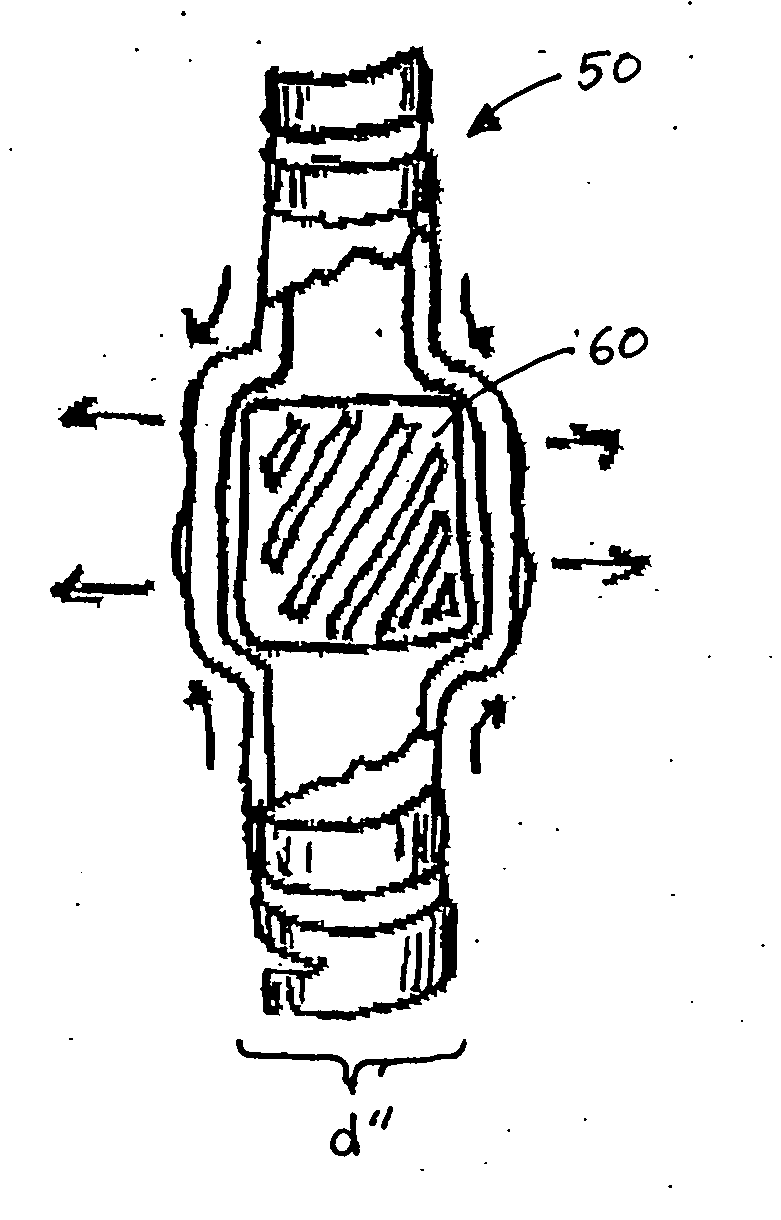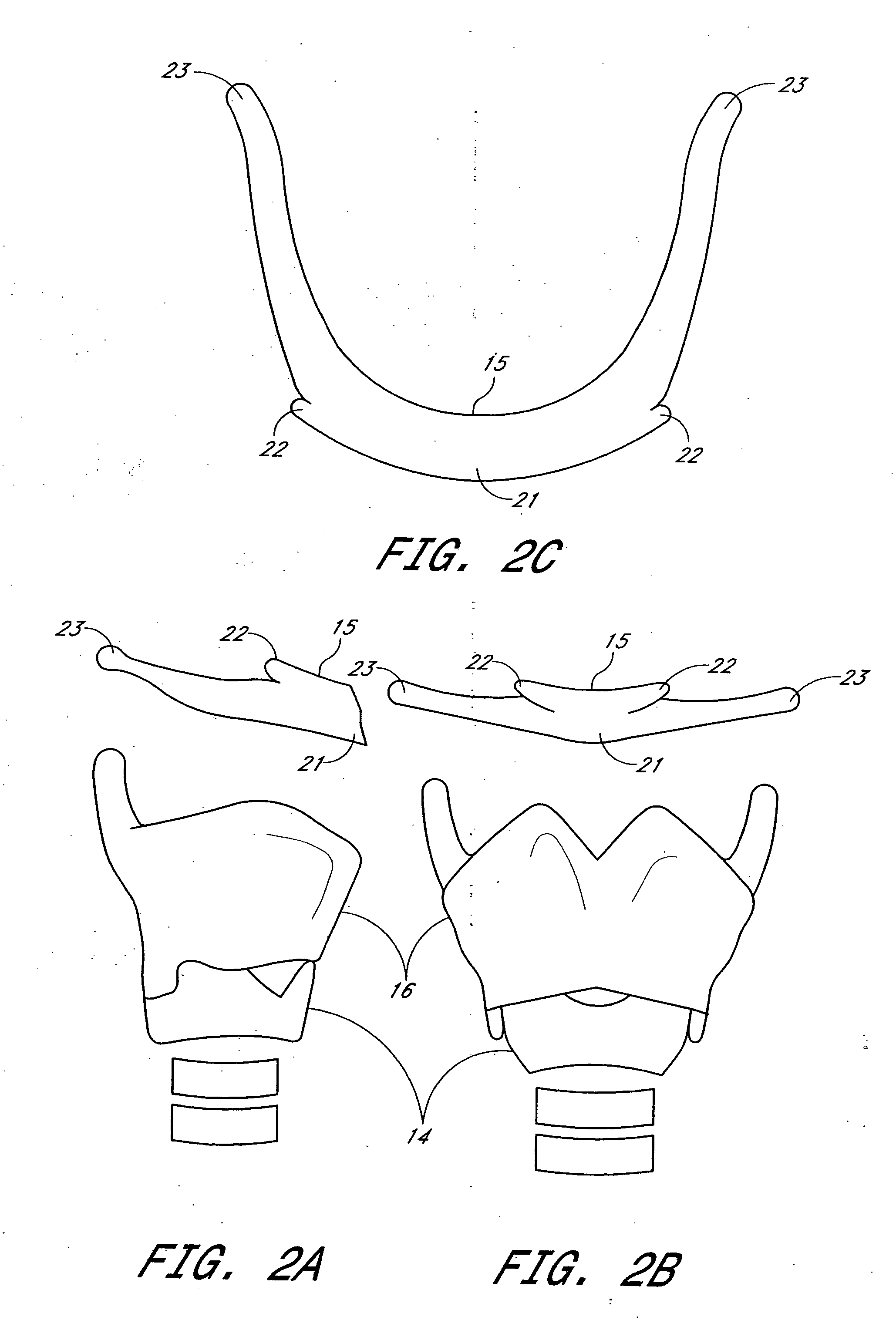System and method for airway manipulation
a system and airway technology, applied in the field of system and method of airway manipulation, can solve the problems of increased inspiratory effort, excessive daytime sleepiness, and risk of airway obstruction during sleep, and achieve the effect of shortened distance between the first and second attachment points
- Summary
- Abstract
- Description
- Claims
- Application Information
AI Technical Summary
Benefits of technology
Problems solved by technology
Method used
Image
Examples
Embodiment Construction
[0065] The present invention provides methods and devices for manipulating the airway. It is hypothesized that the laxity in pharyngeal structures contributes to the pathophysiology of obstructive sleep apnea, snoring, upper airway resistance and sleep disordered breathing. This laxity may be intrinsic to the pharyngeal structures and / or may be affected by interrelationships between pharyngeal structures and other body structures. For example, in the upright position, gravity lessens the effect of abdominal cavity organs on the diaphragm. When in the prone or supine position, however, the contents of the abdominal cavity have a greater tendency to displace the diaphragm superiorly, which in turn displaces the lungs, bronchi and trachea and other portions of the airway superiorly and accentuates the laxity of the pharyngeal structures by reducing the tissue tension normally applied by the airway on the laryngeal structures. The embodiments of the invention, however, are not restricte...
PUM
 Login to View More
Login to View More Abstract
Description
Claims
Application Information
 Login to View More
Login to View More - R&D
- Intellectual Property
- Life Sciences
- Materials
- Tech Scout
- Unparalleled Data Quality
- Higher Quality Content
- 60% Fewer Hallucinations
Browse by: Latest US Patents, China's latest patents, Technical Efficacy Thesaurus, Application Domain, Technology Topic, Popular Technical Reports.
© 2025 PatSnap. All rights reserved.Legal|Privacy policy|Modern Slavery Act Transparency Statement|Sitemap|About US| Contact US: help@patsnap.com



